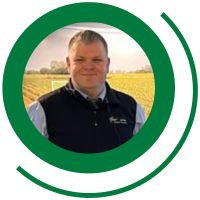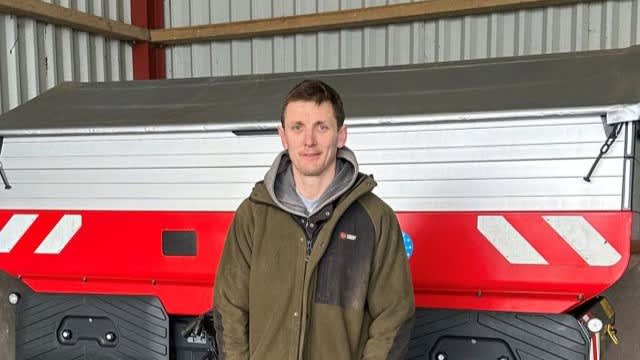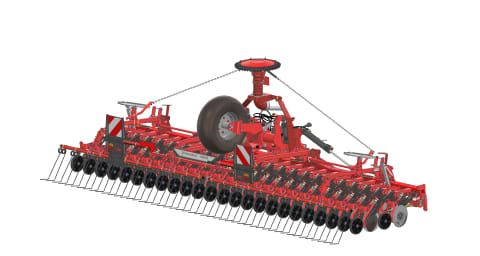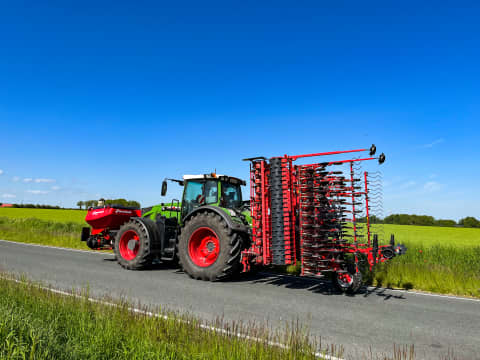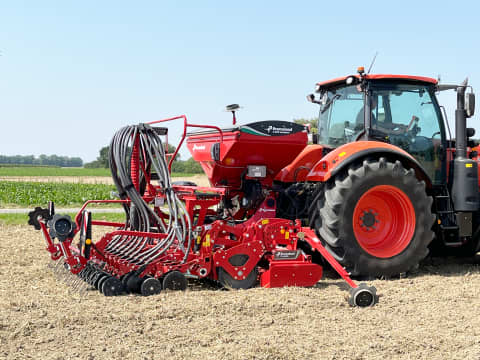“I was hesitant, because you never really know if this technology really works,” explains James, pictured. “But it’s been brilliant. And if the sun is shining on the back of the spreader, you can see the spread pattern and how it adjusts to suit corners or narrow strips.”
J & DL Picken of Milton Farm, Kirkudbright in Dumfrieshire bought its first GEOSPREAD machine in 2016, upgrading in 2024 through RC Dalgliesh, to the very latest model.
“We stuck with exactly the same size and specification,” he says. “Having auto start/stop and section control has been a revelation when it comes to application accuracy.”
The 2,500-acre mixed farm is mostly grassland to support its dairy and sheep enterprises, with 300 acres used for cereal crops. Fields are undulating and of a variety of shapes and sizes.
“We don’t have any square fields,” he says. “And when we’re spreading on grass, we don’t have the luxury of 24m tramlines, though this is where GEOSPREAD really shines. The control box knows where the spreader has or hasn’t been, and it just won’t overlap.”
Mr Picken says that through GPS and mapping, knowing exact field sizes and kilograms needed for each, has improved logistics.
“We can take an exact amount in the spreader, as we never run short or need to nip back to open another bag just to finish off,” he says. “It’s usually accurate to within 5kg. And while we’re not using less fertiliser across the farm, we’re getting very even coverage in every field. There’s no flat crops any more from where there would be obvious over-dosing.”
Operated on Valtra T175 tractor with auto-steering and isobus connectivity, the spreader offers plug and play compatibility and loads up on the tractor terminal.
“It’s very easy to use, though it’s also important to trust the technology,” he says.
